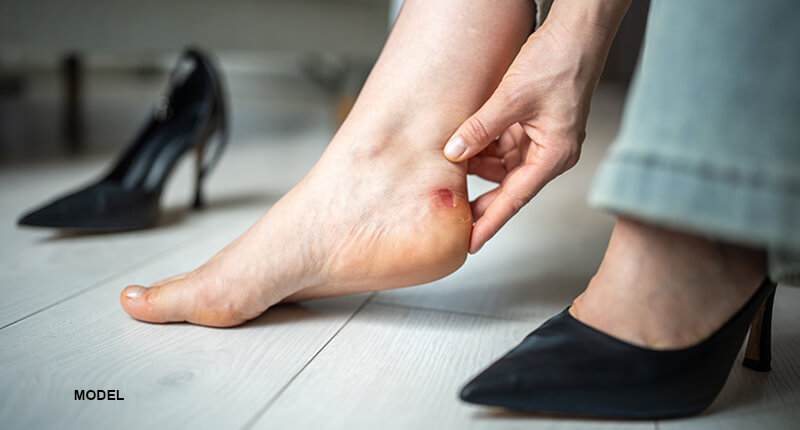Blister First Aid: Step-By-Step Treatment For Relief

Blisters are a common skin ailment that can cause significant discomfort. They can result from various causes and come in different types. Understanding how to manage and treat blisters effectively can help alleviate pain and prevent complications. In this blog post, we will provide a comprehensive overview of blisters, their types, causes, prevention strategies, and step-by-step treatment methods.
What are Blisters?
Blisters are small pockets of fluid that form on the upper layers of the skin, typically as a response to injury or irritation. They serve as a protective barrier, allowing the underlying tissue to heal. Blisters can be filled with serum, blood, or pus, depending on the cause and severity of the injury.
Common Blister Symptoms
- Raised, fluid-filled bumps on the skin
- Redness and swelling around the blister
- Pain or tenderness in the affected area
- Itching or burning sensation
- In some cases, the skin around the blister may feel warm
Types of Blisters
Blisters can be categorized based on their causes and the type of fluid they contain. The most common types include:
Friction Blisters
Friction blisters are caused by repeated rubbing or pressure against the skin. This is often seen with poorly fitting shoes or during prolonged physical activity. The constant friction causes the top layer of skin to separate from the underlying layers, creating a fluid-filled space.
Heat Blisters
Heat blisters result from exposure to high temperatures, such as from burns or scalds. These blisters form as a protective response to thermal injury, helping to shield the damaged skin underneath.
Blood Blisters
Blood blisters occur when the skin is pinched or crushed, causing blood vessels to rupture and fill the blister with blood. These are typically more painful than friction blisters due to the deeper level of skin trauma involved.
What Causes Blisters?
Several factors can lead to the formation of blisters, including:
Friction
Repeated rubbing or pressure on the skin is the most common cause of blisters. This can happen from wearing ill-fitting shoes, using tools, or engaging in activities that cause repetitive motion.
Burns / Scalds
Thermal injuries, such as burns or scalds from hot liquids, can cause blisters to form as a means to protect the underlying tissue from further damage.
Certain Skin Conditions
Skin conditions like eczema, dermatitis, and psoriasis can cause blistering. These conditions often lead to inflamed, irritated skin that is more prone to blisters.
Allergic Reaction or Infections
Allergic reactions to substances such as poison ivy, certain chemicals, or insect bites can result in blister formation. Infections, whether bacterial, viral, or fungal, can also cause blisters as part of the body’s immune response.
How to Prevent Blisters
Preventing blisters involves taking steps to protect your skin from the factors that cause them. Here are some effective strategies:
Proper Footwear
Wearing shoes that fit well and provide adequate support can help prevent friction blisters. Ensure that your footwear is appropriate for the activity you are participating in and consider using moisture-wicking socks to keep your feet dry.
Avoiding Skin Damage and Burns
Be cautious around hot surfaces and materials to avoid burns and scalds. Use protective gear such as gloves and oven mitts when handling hot objects.
Skin Care Practices
For those prone to blisters from skin conditions, maintaining a regular skincare routine can help manage symptoms. Use moisturizers to keep the skin hydrated and follow any treatment plans recommended by your dermatologist.
Minimizing Infection or Allergy Risks
Avoid known allergens and practice good hygiene to reduce the risk of infections. Clean any cuts or scrapes promptly and keep them covered to prevent bacterial entry.
How to Treat a Blister That Has Not Popped
If you have a blister that has not popped, it is best to leave it intact. The blister serves as a natural barrier against infection and aids in the healing process.
Steps to Follow:
- Allow natural healing: Most blisters will heal on their own within a few days. The fluid inside helps protect the underlying skin.
- Prevent enlargement: Avoid activities that could increase friction or pressure on the blister.
- Avoid popping or draining: Popping a blister can introduce bacteria and increase the risk of infection.
- Cover loosely: Use a bandage to cover the blister lightly. This helps protect it from further irritation while allowing some airflow.
- Reduce pressure: Try not to put any pressure on the blistered area. If possible, adjust your activities or use padding to reduce friction.
How to Treat a Popped Blister
If your blister has already popped, it is important to keep the area clean and protected to prevent infection.
Steps to Follow:
- Clean the area: Gently wash the area with soap and warm water. Antibacterial soap, betadine, or hydrogen peroxide can be used to ensure thorough cleaning.
- Leave the skin flap: Do not remove the remaining skin flap. It can help protect the raw skin underneath and promote faster healing.
- Use an antiseptic: After cleaning, apply an antiseptic ointment to the area to prevent infection.
- Cover the blister: Use a sterile bandage or dressing to cover the blister. Change the dressing daily or if it becomes wet or dirty.
For Large or Very Painful Blisters
In cases where blisters are large or causing significant pain, draining the blister can provide relief. Follow these steps to safely drain a blister:
Steps to Drain a Blister:
- Sterilize a needle: Use rubbing alcohol to sterilize a small needle.
- Pierce the blister: Gently pierce the outer edge of the blister. Avoid piercing the center to minimize damage to the underlying skin.
- Let it drain: Allow the fluid to drain out completely. You can gently press around the blister to help expel the fluid.
- Clean the area: Once drained, clean the area with soap and warm water.
- Apply ointment: Apply an antibiotic ointment to the area to prevent infection.
- Keep covered: Cover the blister with a sterile bandage.
When to Seek Professional Help
While most blisters can be managed at home, there are times when you should seek medical attention:
- Slow healing: If the blister does not heal within a week or shows no signs of improvement, consult a healthcare professional.
- Signs of infection: Redness, increased pain, warmth, pus, or red streaks around the blister may indicate an infection.
- Recurring blisters: Frequent blisters may be a sign of an underlying condition that requires medical evaluation and treatment.
By understanding the causes, prevention methods, and proper treatment of blisters, you can effectively manage this common skin issue. Remember, proper care and attention can make a significant difference in the healing process and your overall comfort when dealing with blisters.
